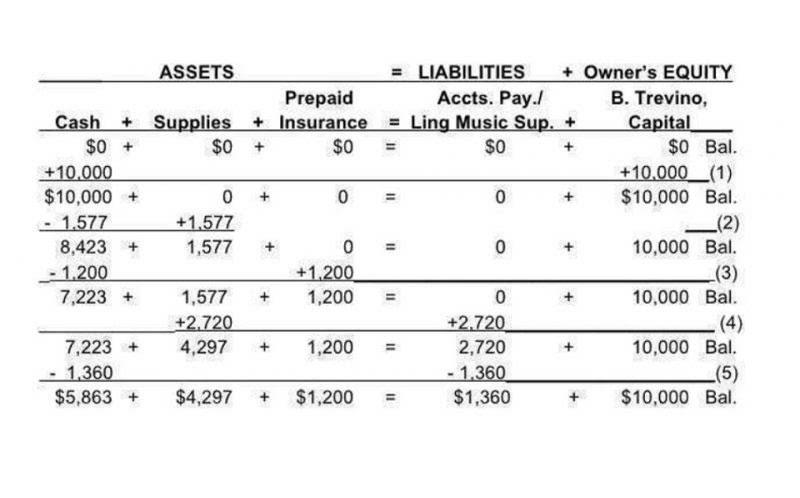
Number Swapping Woes: How Transposition Errors Affect Accuracy

In this blog post, we will explore the definition, causes, and consequences of transposition errors, and provide you with valuable insights to help you avoid them in the future. Accurate financial data is the cornerstone of informed decision-making and regulatory compliance. Transposition errors can have significant consequences in various real-life scenarios, from financial transactions to data entry and even legal documents. These errors occur when the order of characters, digits, or words is mistakenly rearranged, leading to inaccurate information and potentially causing confusion or financial loss. To truly understand the gravity of these errors, let’s delve into some real-life case studies that highlight the implications and offer insights on how to prevent them.
An unbalanced trial balance
Implementing automated validation checks, such as using checksum algorithms or built-in error detection mechanisms, can also help identify potential transposition errors before they cause significant issues. Understanding the causes and implementing appropriate solutions for transposition errors is crucial for maintaining data accuracy and preventing potential consequences. Transposition errors can be a frustrating and costly transposition error meaning mistake that occurs when numbers or letters are mistakenly reversed or rearranged. These errors can happen in various contexts, from financial transactions to data entry, and can have serious consequences if not caught and corrected in a timely manner. In this section, we will explore some preventive measures that can be taken to minimize the occurrence of transposition errors and ensure the accuracy of our work.

Transposition Errors in Accounting Systems
To prevent these, companies must implement stringent control measures, such as regular reconciliations, segregation of duties, and automated validation checks. Transposition Errors can significantly impact the accuracy and integrity of financial statements, leading to discrepancies that may influence financial planning and decision-making processes within an organization. The intricate nature of accounts payable, dealing with numerous invoices, and managing vendor relationships can lead to mismanagement and errors if not handled with meticulous attention. Addressing these challenges requires a keen focus on accuracy, transparency, and robust validation processes within the accounting and bookkeeping practices. The occurrence of Transposition Errors can be attributed to various factors, including oversight, data entry mistakes, and the effectiveness of internal controls related to financial reporting and management. Interactive workshops that simulate real-world scenarios can be particularly effective.
- The impact of transposition errors on data accuracy can be far-reaching, affecting decision-making, reputation, compliance, finances, and operational efficiency.
- Trial balance errors cause inaccuracies on your balance sheet and income statement.
- Mistakes happen, especially when it comes to recording transactions in your books.
- Data validation rules are particularly useful for large datasets and can be automated to save time and effort.
- See what correction is needed (i.e., the rectified entry that is recorded by comparing the entries in (1) and (2)).
Intentional Errors
- Similarly, in algebraic equations, a transposition error can completely alter the solution, leading to incorrect interpretations of mathematical relationships.
- While they may seem like minor mistakes, transposition errors can have significant consequences, leading to financial discrepancies, misinterpretation of data, and even legal issues.
- These errors often occur when numbers are mistakenly switched, such as recording $1,235 as $1,532.
- Similar to manual verification, visual inspection relies on human observation to identify transposition errors.
- This practice helps to ensure that for every action recorded, there is a corresponding and equal reaction, making it easier to spot inconsistencies that may indicate a transposition error.
- While the second one is the debit and credit side is not corresponding to the double-entry of the transaction.
A transposition error occurs when the first two digits of a number are switched, creating a difference that is evenly divisible by nine. A nontransposition error pattern in transposition error can be described by similar examples. Both debit which is accounts receivable and credit, sales revenue, has been recorded as $5,706. This results in the overstatement of both credit sales and accounts receivable of $90. Accounting errors normally discovered through mathematical mistakes, mistakes from applying accounting policies, misinterpretation of facts of transactions, lack of oversights, and fraud.
Rectification of Entry

In business, however, entering the wrong sequence of digits can lead to serious, even disastrous consequences. The process of finding and correcting mistakes of this kind is called Rectification of Errors. Rectification of Errors can be addressed by answering the questions of what, why, and how. Every business is interested in finding out its true results in terms of profit or loss from the operational activities, as well as its true financial position at the end of the financial year.
Consequences of Transposition Errors:
- For instance, ABC Co has recorded the repair of non-current assets as capital expenditure increases the value of the non-current assets.
- In this example, the wrong number will be evenly divisible by nine, and the correct number will be 36.
- Therefore, it is crucial to identify and rectify these errors promptly to avoid any potential setbacks.
- For this reason, the following rectification entry was made in the journal.
- This process involves thorough scrutiny of financial records, such as double-entry accounting systems and ledger entries, to pinpoint any discrepancies that may indicate transposition errors.
These errors may result in inaccurate financial records, leading to misinformed decision-making and potential loss of investor confidence. They can have implications for taxation and regulatory compliance, creating legal challenges. Such errors can distort the true financial position of the company, impacting its ability to secure loans or investments. Regularly comparing account balances against external sources, such as bank statements, can reveal discrepancies that stem from transposition errors. Reconciliation should be performed at consistent intervals to catch errors promptly, reducing the potential for compounded mistakes that can escalate over time.
Impact of Transposition Errors on Data Accuracy
Imagine a scenario where a patient receives the wrong medication due to a transposition error in the prescription. To prevent such errors, healthcare professionals employ barcode scanning systems, electronic medical records, and rigorous double-checking protocols. Transposition errors refer to the unintentional swapping of digits, letters, or other elements within a sequence.
Transposition Error: Definition, Causes, And Consequences
We’re firm believers in the Golden Rule, which is why editorial opinions are ours alone and have not been previously reviewed, approved, or endorsed by included advertisers. The Ascent, a Motley Fool service, does not cover all offers on the market. Implement a system to catch and correct errors promptly to avoid creating more problems for yourself.
What situations do the errors in accounting typically occurs?
These errors occur when the order of digits or characters is mistakenly swapped, leading to incorrect calculations, discrepancies in financial statements, and potential financial losses for businesses. In this section, we will delve into the causes and impacts of transposition errors, explore different perspectives on addressing these issues, and discuss the best practices for minimizing their occurrence. This error can occur, for example, when inputting a number incorrectly in a spreadsheet or during data entry.
Decoding the Consequences of Transposition Errors
Whether in financial transactions, scientific research, or legal contexts, the impact of these errors can be significant. To ensure accuracy and minimize the risk of transposition errors, organizations and individuals must embrace technological advancements, establish robust validation processes, and prioritize attention to detail. Only through proactive measures can we unravel the mystery of transposition errors and safeguard against their potential repercussions. Transposition errors can have a significant impact on the accuracy and reliability of data. Whether it’s a simple switch of two digits or the rearrangement of an entire sequence, these errors can lead to misunderstandings, financial losses, and even legal complications. From a business perspective, transposition errors can result in incorrect invoices, delayed shipments, and inaccurate financial statements, damaging the reputation and credibility of an organization.
